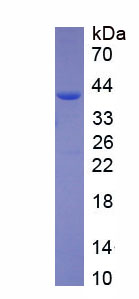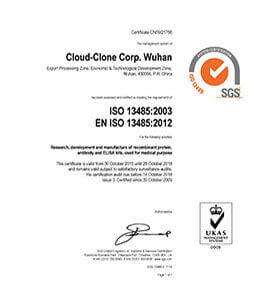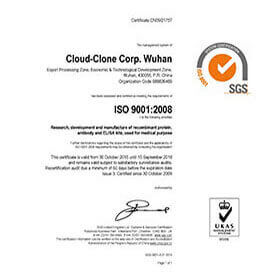Active VGF Nerve Growth Factor Inducible (VGF)
NERP1; NERP2; Neuro-Endocrine Specific Protein VGF; Neuroendocrine Regulatory Peptide
- Product No.APB166Mu61
- Organism SpeciesMus musculus (Mouse) Same name, Different species.
- Buffer FormulationPBS, pH7.4, containing 0.01% SKL, 1mM DTT, 5% Trehalose and Proclin300.
- Traits Freeze-dried powder
- Purity> 95%
- Isoelectric Point4.2
- ApplicationsCell culture; Activity Assays.
- DownloadInstruction Manual
- UOM 10µg50µg 200µg 1mg 5mg
- FOB
US$ 372
US$ 930
US$ 1860
US$ 5580
US$ 13950
For more details, please contact local distributors!
ACTIVITY TEST
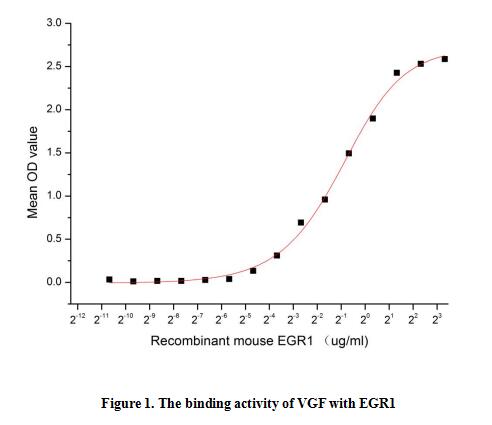
Neurosecretory protein VGF is specifically expressed in a subpopulation of neuroendocrine cells, and is upregulated by nerve growth factor. The protein shares similarities with the secretogranin/chromogranin family, however, its exact function is not known. Besides, Early Growth Response Protein 1 (EGR1) has been identified as an interactor of VGF, thus a binding ELISA assay was conducted to detect the interaction of recombinant mouse VGF and recombinant mouse EGR1. Briefly, EGR1 was diluted serially in PBS with 0.01% BSA (pH 7.4). Duplicate samples of 100μl were then transferred to VGF-coated microtiter wells and incubated for 1h at 37℃. Wells were washed with PBST and incubated for 1h with anti- EGR1 pAb, then aspirated and washed 3 times. After incubation with HRP labelled secondary antibody for 1h at 37℃, wells were aspirated and washed 5 times. With the addition of substrate solution, wells were incubated 15-25 minutes at 37℃. Finally, add 50µL stop solution to the wells and read at 450/630nm immediately. The binding activity of VGF and EGR1 was shown in Figure 1, the ED50 for this effect is 0.515 ug/mL.
USAGE
Reconstitute in 10mM PBS (pH7.4) to a concentration of 0.1-1.0 mg/mL. Do not vortex.
STORAGE
Avoid repeated freeze/thaw cycles. Store at 2-8°C for one month. Aliquot and store at -80°C for 12 months.
STABILITY
The thermal stability is described by the loss rate. The loss rate was determined by accelerated thermal degradation test, that is, incubate the protein at 37°C for 48h, and no obvious degradation and precipitation were observed. The loss rate is less than 5% within the expiration date under appropriate storage condition.
GIVEAWAYS
INCREMENT SERVICES
-
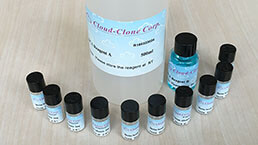 BCA Protein Quantification Kit
BCA Protein Quantification Kit
-
 Molecular Mass Marker for Protein
Molecular Mass Marker for Protein
-
 Monoclonal Antibody Customized Service
Monoclonal Antibody Customized Service
-
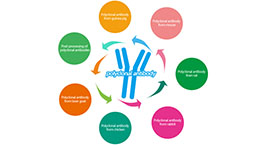 Polyclonal Antibody Customized Service
Polyclonal Antibody Customized Service
-
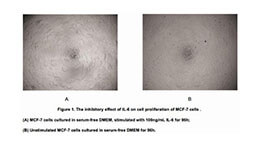 Protein Activity Test Experiment Service
Protein Activity Test Experiment Service
-
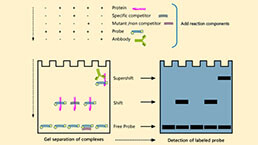 Electrophoretic Mobility Shift Assay (EMSA) Experiment Service
Electrophoretic Mobility Shift Assay (EMSA) Experiment Service
-
 Buffer
Buffer
-
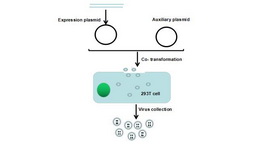 Lentivirus Packaging Experiment Service
Lentivirus Packaging Experiment Service
-
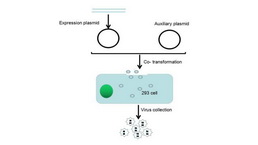 Adenovirus Packaging Experiment Service
Adenovirus Packaging Experiment Service
-
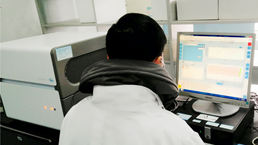 Real Time PCR Experimental Service
Real Time PCR Experimental Service
-
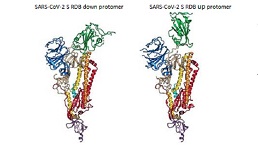 Spike RBD Protein (S-RBD)
Spike RBD Protein (S-RBD)
-
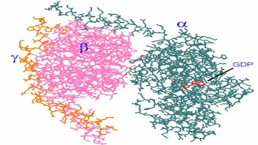 Protein G
Protein G
-
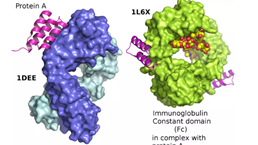 Protein A
Protein A
| Magazine | Citations |
| Journal of Neuroendocrinology | Proteomic analysis of cerebrospinal fluid from obese women with idiopathic intracranial hypertension: a new approach for identifying new candidates in the pathogenesis of obesity PubMed: 22296024 |
| J Psychiatr Res | Low VGF is associated with executive dysfunction in patients with major depressive disorder Pubmed:35738161 |
| Catalog No. | Related products for research use of Mus musculus (Mouse) Organism species | Applications (RESEARCH USE ONLY!) |
| EPB166Mu61 | Eukaryotic VGF Nerve Growth Factor Inducible (VGF) | Positive Control; Immunogen; SDS-PAGE; WB. |
| RPB166Mu02 | Recombinant VGF Nerve Growth Factor Inducible (VGF) | Positive Control; Immunogen; SDS-PAGE; WB. |
| APB166Mu01 | Active VGF Nerve Growth Factor Inducible (VGF) | Cell culture; Activity Assays. |
| APB166Mu61 | Active VGF Nerve Growth Factor Inducible (VGF) | Cell culture; Activity Assays. |
| RPB166Mu01 | Recombinant VGF Nerve Growth Factor Inducible (VGF) | Positive Control; Immunogen; SDS-PAGE; WB. |
| PAB166Mu01 | Polyclonal Antibody to VGF Nerve Growth Factor Inducible (VGF) | WB; IHC; ICC; IP. |
| PAB166Mu02 | Polyclonal Antibody to VGF Nerve Growth Factor Inducible (VGF) | WB; IHC; ICC; IP. |
| SEB166Mu | ELISA Kit for VGF Nerve Growth Factor Inducible (VGF) | Enzyme-linked immunosorbent assay for Antigen Detection. |
| LMB166Mu | Multiplex Assay Kit for VGF Nerve Growth Factor Inducible (VGF) ,etc. by FLIA (Flow Luminescence Immunoassay) | FLIA Kit for Antigen Detection. |


